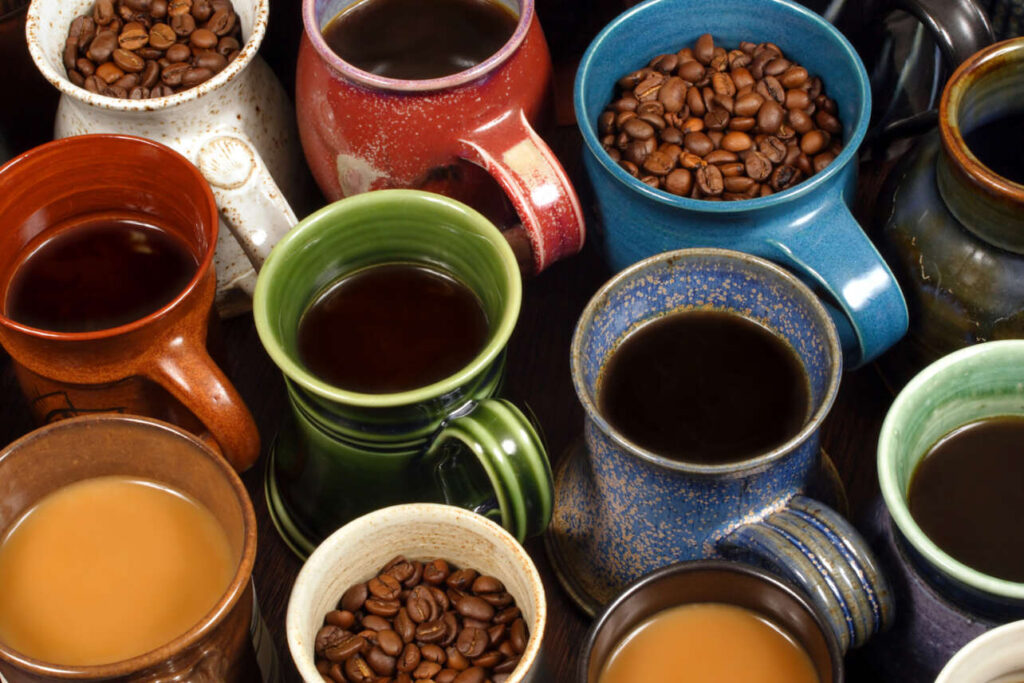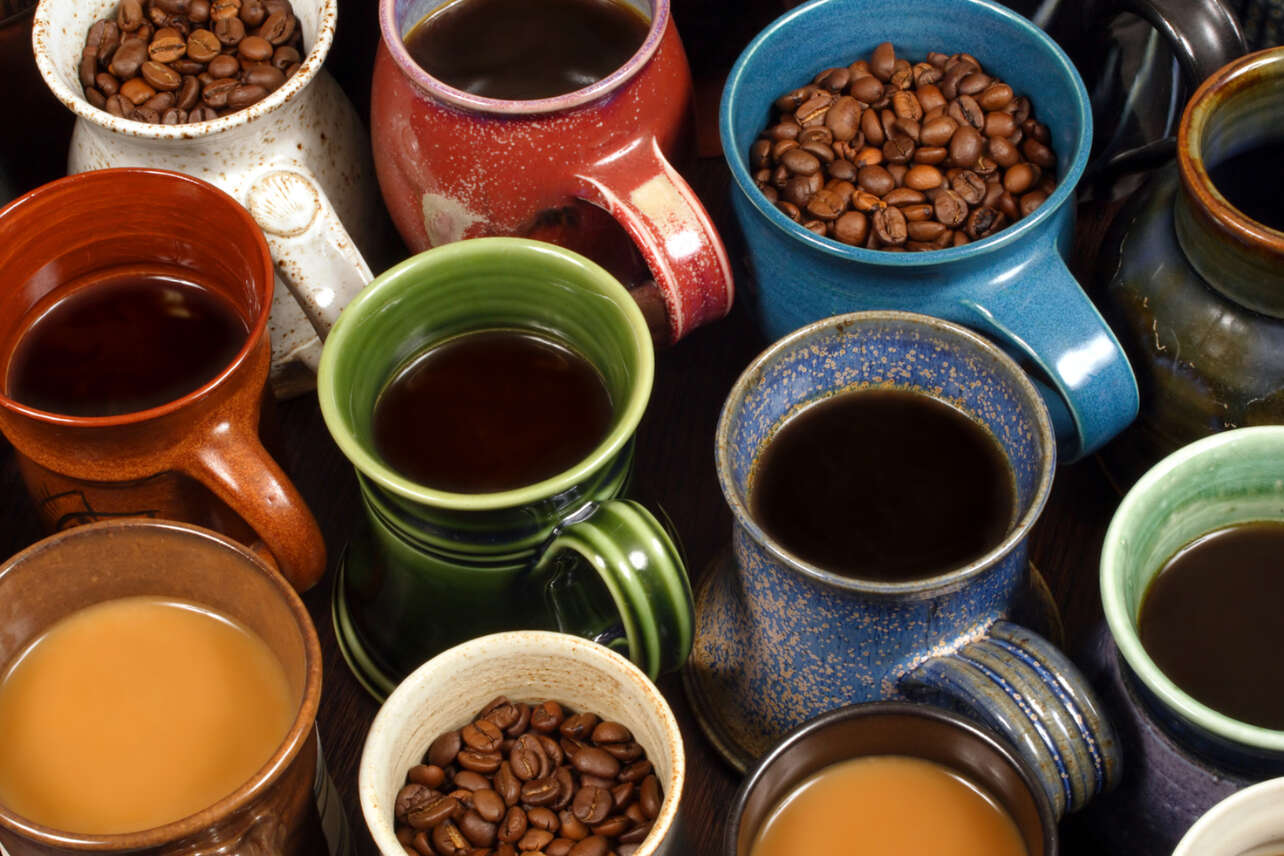
What Are Coffee Cups Made Of? A Deep Dive into Materials and Sustainability
The humble coffee cup: a ubiquitous object, a daily necessity for millions, and a surprisingly complex subject when you delve into its composition. From the morning commuter grabbing a latte to the home barista meticulously crafting a pour-over, the vessel holding our precious caffeine fix is more than just a container; it’s a product of engineering, design, and increasingly, a battleground for environmental responsibility. But what are coffee cups made of? The answer, as we’ll explore, is multifaceted, involving a range of materials, each with its own set of properties, advantages, and drawbacks.
This article will embark on a journey to uncover the materials that shape our coffee-drinking experience, exploring the production processes, environmental impacts, and the ongoing search for more sustainable alternatives. We’ll examine the common culprits – paper, plastic, and ceramic – and delve into the innovative solutions emerging in the market. Understanding what coffee cups are made of is crucial for making informed choices and contributing to a more sustainable future.
The Reign of Paper Cups: Convenience vs. Complexity
The paper coffee cup reigns supreme in the takeaway coffee market. Its popularity stems from its affordability, disposability, and perceived convenience. But what are these paper cups actually made of? The primary component is, as the name suggests, paper. However, the paper itself isn’t enough to contain hot liquids for extended periods. This is where the often-overlooked detail of the cup’s construction comes into play.
Most paper coffee cups are coated with a thin layer of polyethylene (PE) plastic. This plastic coating is what makes the cup waterproof and able to withstand heat. The paper provides the structural integrity, while the plastic acts as a barrier, preventing leaks and preserving the cup’s shape. However, this combination presents a significant challenge in terms of recycling. The paper and plastic are difficult to separate, making these cups notoriously hard to recycle, and often ending up in landfills. So, while the initial impression might be of a simple paper product, the reality is far more complex.
The Manufacturing Process of Paper Coffee Cups
The journey of a paper coffee cup begins with the harvesting of trees, typically from managed forests. The wood pulp is then processed into paper. This paper is then cut and shaped, often through a die-cutting process, to form the basic cup structure. The polyethylene coating is then applied, either through extrusion or spraying. Finally, the cups are assembled, often with a rolled rim for added rigidity and a lid to prevent spills. The entire process is streamlined for mass production, contributing to the cup’s affordability, but also its environmental footprint.
The Environmental Impact of Paper Cups
The environmental impact of paper coffee cups is substantial. The use of virgin paper contributes to deforestation, and the manufacturing process requires significant energy and water. The plastic coating further complicates the matter, as it’s derived from fossil fuels and contributes to plastic pollution. Even if the paper cup is compostable, the conditions required for composting are often not met in typical landfill environments, leading to a prolonged decomposition process, which can release greenhouse gases. The question of what coffee cups are made of and how to dispose of them sustainably is a pressing one.
Ceramic and Porcelain Cups: The Classic Choice
For those enjoying their coffee at home or in a cafe setting, ceramic and porcelain cups offer a more sustainable and aesthetically pleasing option. These cups are made from clay, which is fired at high temperatures to create a durable and heat-resistant material. The glazing process, which involves applying a coating of glass, adds to the cup’s impermeability and provides the glossy finish that is characteristic of these types of cups.
Ceramic and porcelain cups are generally more durable than paper cups, and they can be washed and reused countless times. They are also free from the plastic coatings found in disposable cups, making them a more environmentally friendly choice. However, the manufacturing process of ceramic cups still has an environmental impact, involving energy-intensive firing processes and the extraction of raw materials. Additionally, the transportation of these heavier cups can contribute to carbon emissions.
The Advantages of Ceramic Cups
The advantages of using ceramic cups are numerous. They offer a superior drinking experience, as the material doesn’t impart any taste or odor to the coffee. They are also more durable and can last for many years with proper care. Furthermore, the reusability of ceramic cups significantly reduces waste compared to disposable options. The answer to what coffee cups are made of, when it comes to ceramic, is a far simpler and generally more sustainable one.
Plastic Cups: A Double-Edged Sword
While less common for hot beverages in the mainstream, plastic cups are still used for iced coffee and cold drinks. These cups are typically made from polypropylene (PP) or polystyrene (PS) plastic. These materials are inexpensive and readily available, making plastic cups an attractive option for businesses. However, the environmental drawbacks of plastic cups are well-documented.
Plastic cups, like their paper counterparts, often end up in landfills. They can take hundreds of years to decompose, and they contribute to plastic pollution in oceans and other environments. Although plastic is often recyclable, the recycling rates for plastic cups are relatively low due to the difficulties in collection, sorting, and processing. The question of what coffee cups are made of and how to dispose of the plastic variety is paramount.
The Challenges of Recycling Plastic Cups
Recycling plastic cups can be challenging. The different types of plastic, such as PP and PS, need to be separated before they can be recycled. This sorting process can be time-consuming and expensive. Furthermore, the quality of the recycled plastic is often lower than that of virgin plastic, which limits its applications. The lack of infrastructure and consumer awareness further hinders the recycling of plastic cups. [See also: The State of Plastic Recycling]
The Rise of Sustainable Alternatives
The growing awareness of the environmental impact of traditional coffee cups has spurred innovation in the industry. Several sustainable alternatives are emerging, aiming to provide a more eco-friendly solution to the coffee cup conundrum. These alternatives often focus on using renewable resources, reducing waste, and promoting recyclability or compostability.
Compostable Cups
Compostable cups are designed to break down naturally in composting facilities. These cups are typically made from plant-based materials such as cornstarch (PLA) or paper coated with a compostable lining. However, the success of compostable cups depends on access to commercial composting facilities, which are not always readily available. Furthermore, the conditions required for composting, such as high temperatures and humidity, may not be met in all environments.
Reusable Cups
Reusable coffee cups are becoming increasingly popular as a sustainable alternative. These cups are made from a variety of materials, including stainless steel, bamboo, and durable plastics. Reusable cups can be used repeatedly, significantly reducing waste. Many coffee shops offer discounts to customers who bring their own reusable cups, incentivizing their use. The materials that these coffee cups are made of are typically designed for longevity.
Bioplastics and Other Innovations
The search for sustainable materials continues. Bioplastics, made from renewable resources like cornstarch or sugarcane, are gaining traction. However, the environmental impact of bioplastics depends on the specific materials used and the manufacturing process. Other innovations include cups made from recycled materials, such as recycled paper or plastic, and cups designed to be easily disassembled for recycling. Understanding what coffee cups are made of is crucial when considering the environmental impact of these innovations.
The Future of Coffee Cups
The future of coffee cups is likely to involve a combination of solutions. The focus will be on reducing waste, promoting recyclability, and using sustainable materials. This will require collaboration between manufacturers, businesses, consumers, and governments. The journey to a more sustainable coffee culture is ongoing, and the question of what coffee cups are made of will continue to evolve as new technologies and materials emerge.
The ideal solution would be a cup that is made from renewable resources, is easily recyclable or compostable, and is durable enough to withstand multiple uses. However, the perfect solution may not exist, and the best approach may involve a combination of strategies, including promoting reusable cups, improving recycling infrastructure, and supporting research and development of innovative materials.
Ultimately, the choices we make as consumers play a crucial role in shaping the future of coffee cups. By being informed, making conscious decisions, and supporting businesses that prioritize sustainability, we can contribute to a more environmentally responsible coffee-drinking experience. The answer to what coffee cups are made of is constantly changing, with new innovations constantly being developed.
Making Informed Choices
Understanding the materials that comprise our coffee cups is the first step towards making informed choices. By being aware of the environmental impact of different materials, we can make choices that align with our values. This includes opting for reusable cups whenever possible, choosing paper cups made from recycled materials, and supporting businesses that are committed to sustainable practices. The information about what coffee cups are made of empowers us to make responsible choices.
The next time you grab a coffee, take a moment to consider the cup in your hand. What is it made of? What is its environmental footprint? By asking these questions, we can all contribute to a more sustainable future, one cup at a time. The question of what coffee cups are made of is not just a simple inquiry; it’s a call to action.
A Call to Action
As we’ve explored, the materials that shape the humble coffee cup have a significant impact on our environment. From the complex composition of paper cups to the challenges of recycling plastic, the journey of a coffee cup is filled with nuances. The question of what coffee cups are made of is a starting point for a broader conversation about sustainability and responsibility. By understanding the materials, the processes, and the alternatives, we can all make choices that contribute to a healthier planet. Let’s make the informed choice, embrace reusable alternatives, and advocate for a future where our daily coffee ritual is as sustainable as it is enjoyable. The materials that coffee cups are made of are constantly evolving, and so must we.
The materials that coffee cups are made of will continue to evolve, and the future of coffee consumption will undoubtedly be shaped by these innovations. The key lies in a collective commitment to sustainability, from manufacturers to consumers, to create a more responsible and environmentally conscious coffee culture. Understanding what coffee cups are made of is only the beginning.
The materials that coffee cups are made of are a reflection of our values and our commitment to the planet. Let’s choose wisely and drink responsibly.


